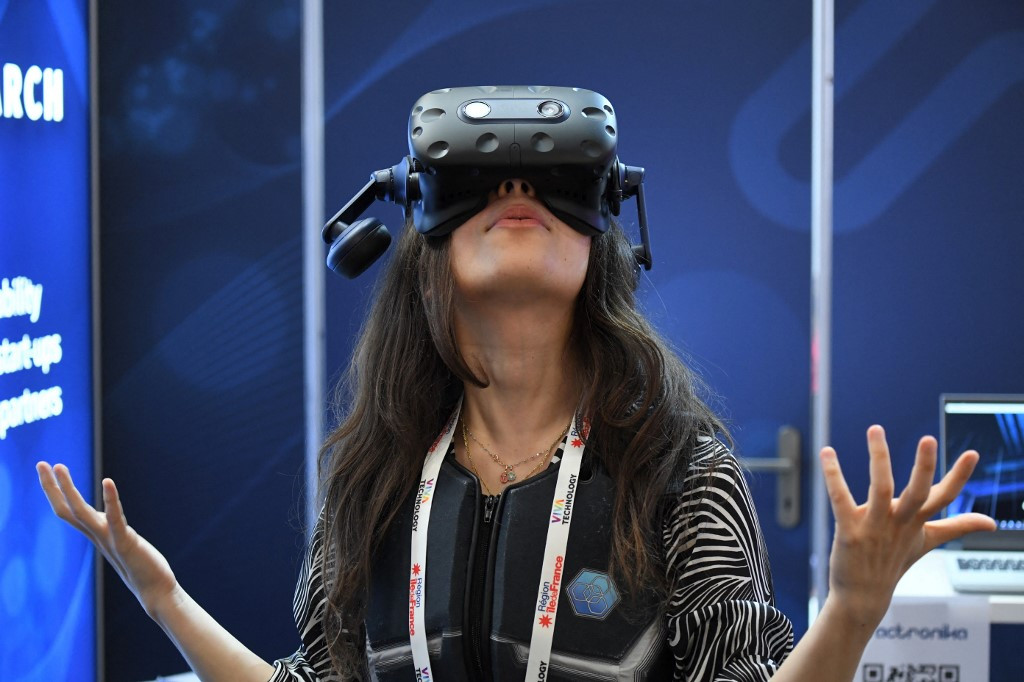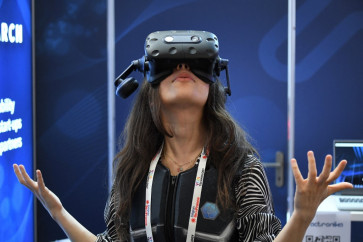Popular Reads
Top Results
Can't find what you're looking for?
View all search resultsPopular Reads
Top Results
Can't find what you're looking for?
View all search resultsThe battle to build a child-friendly metaverse
Meta and many of its competitors market immersive products with a lower age limit of 13 -- though it is widely accepted that younger children will use the tech.
Change text size
Gift Premium Articles
to Anyone
A
s a young woman straps on her vest and headset and becomes immersed in a virtual world, Mainak Chaudhuri talks excitedly about the potential of the technology.
"This is the first step towards the metaverse," Chaudhuri of French start-up Actronika told AFP at this week's VivaTech trade show in Paris.
The vest can give users the sensation of being buffeted by the wind or even feel a monster's breath on their back, and it can be used to enhance movie watching, education or gaming.
It is a family-friendly vision of the 3D immersive internet, now widely known as the metaverse, and sits well with some interactive experiences already widely available for children -- like virtual trips to museums.
But campaigners and experts are increasingly warning that the wider ecosystem needs to start acting on child safety to ensure the benign vision is realised.
"The biggest challenge is kids are getting exposed to content that is not intended for them," said Kavya Pearlman, whose NGO XR Safety Initiative campaigns to ensure immersive technology will be safe for everyone.
The problems she envisages range from children being exposed to sexual and violent material, to worries over young people being used as content creators or having inappropriate contact with adults.



















